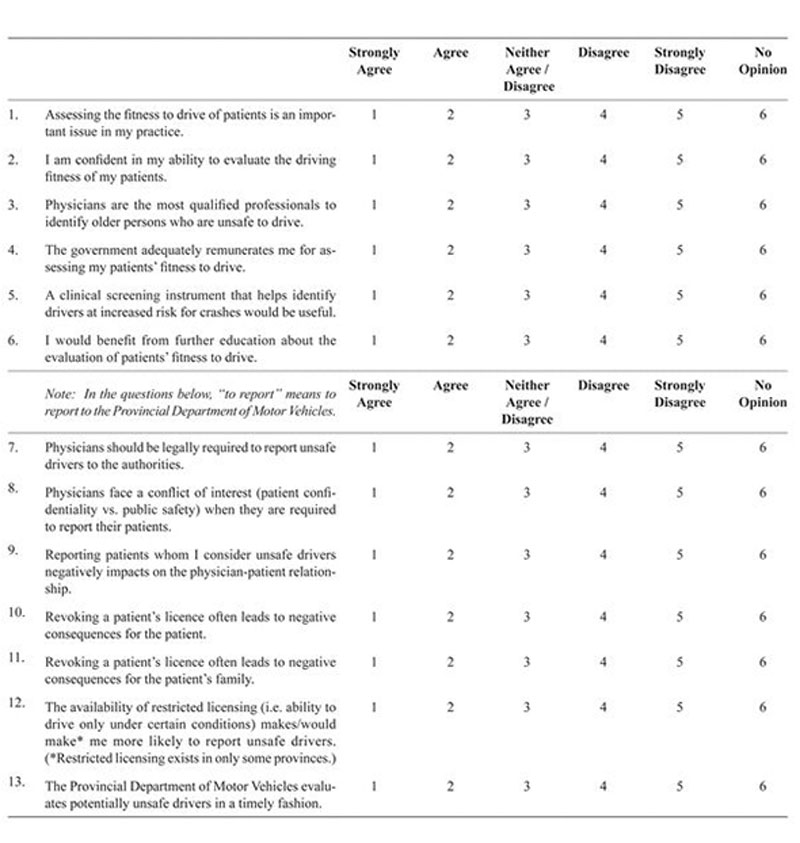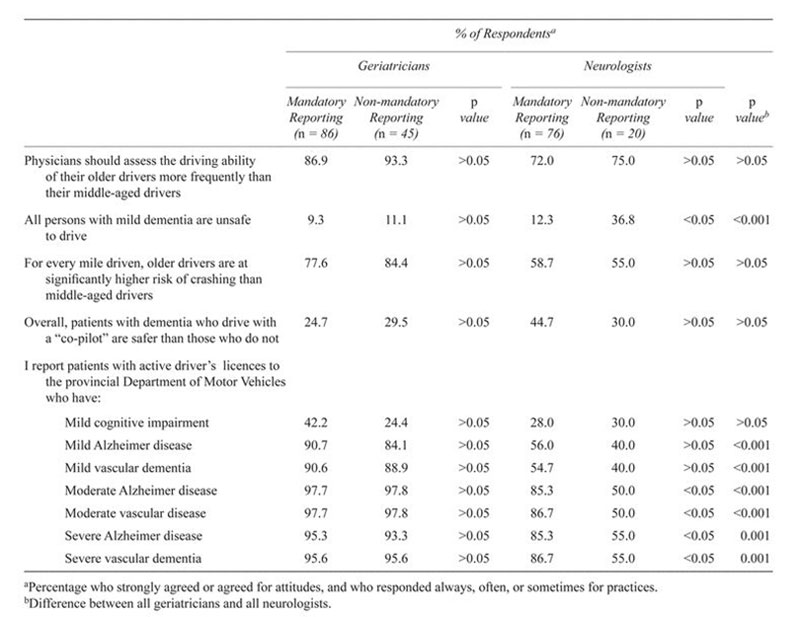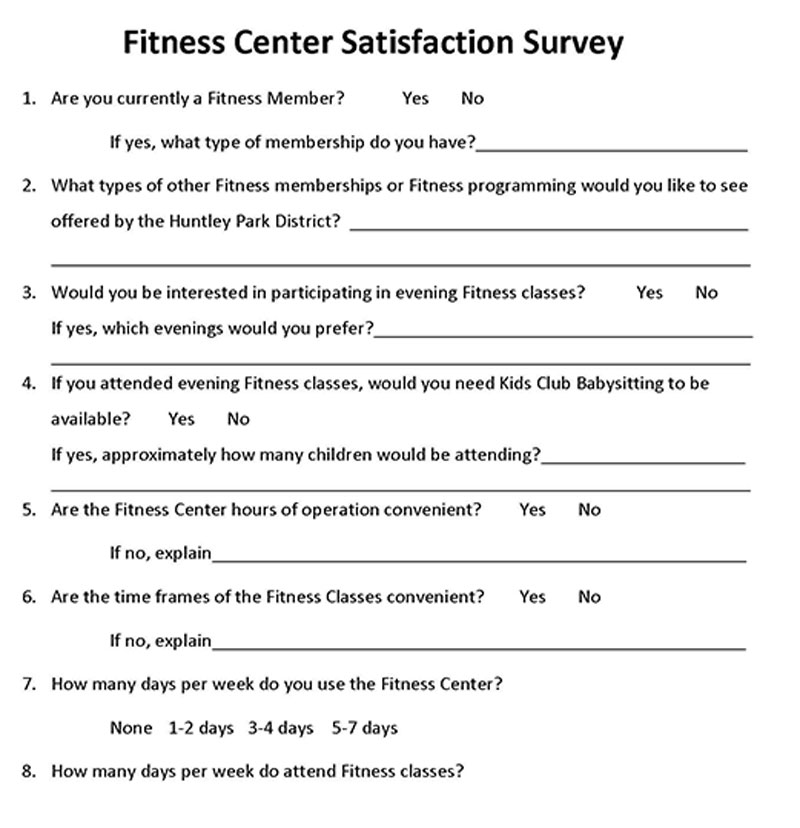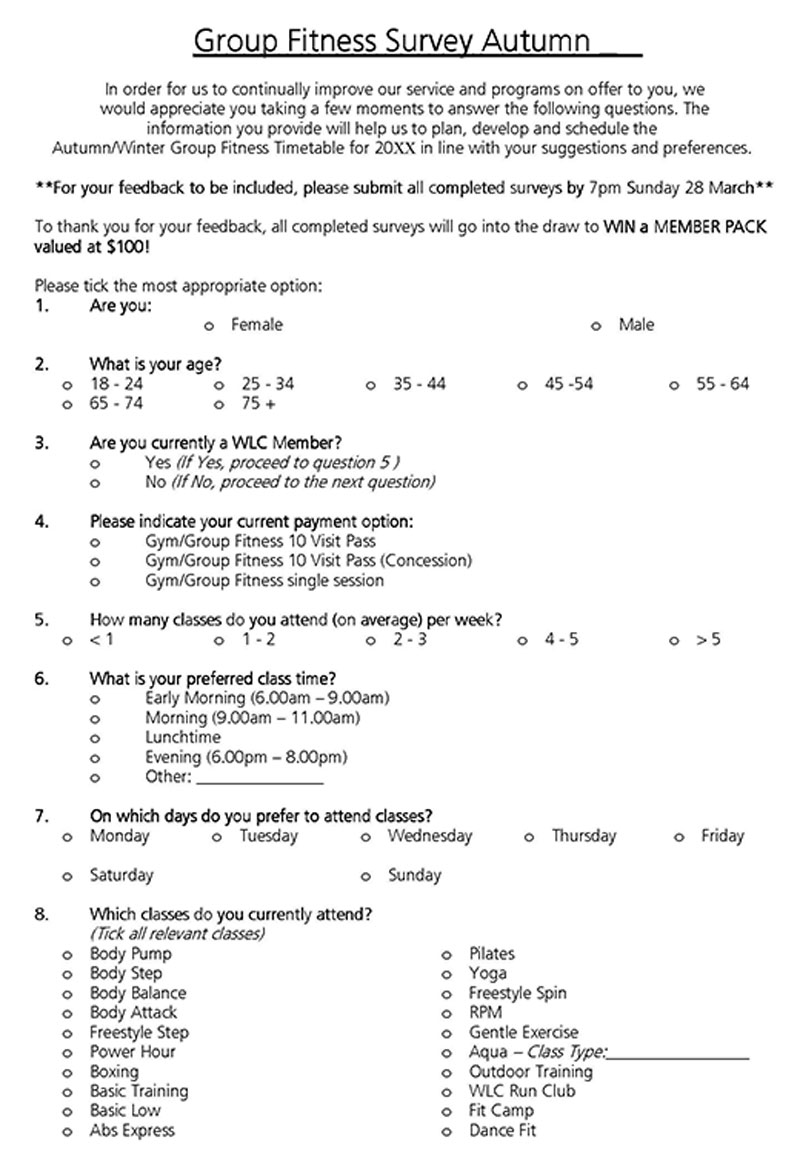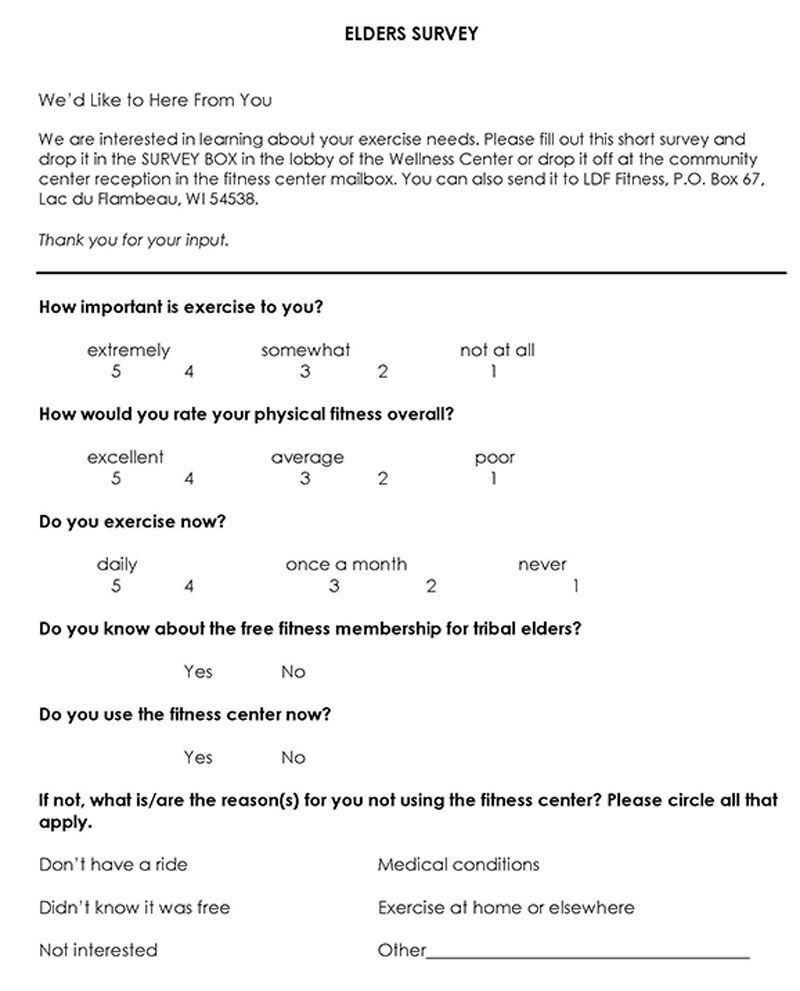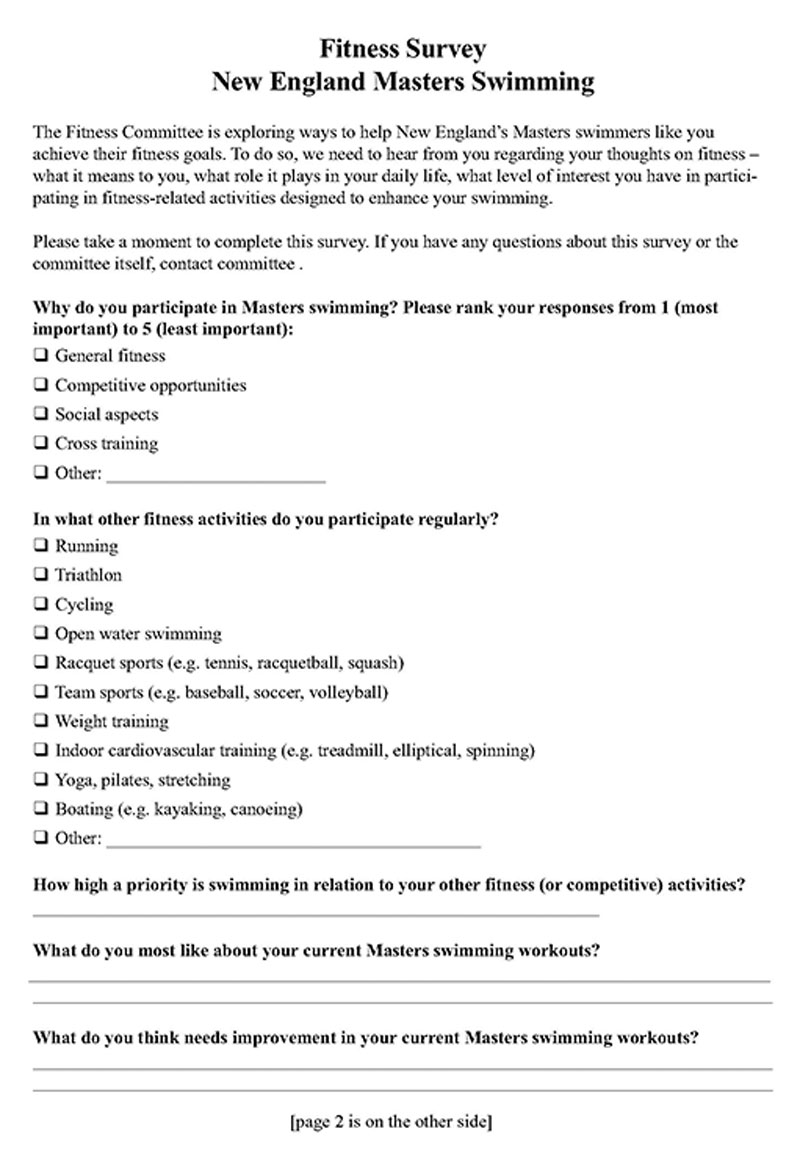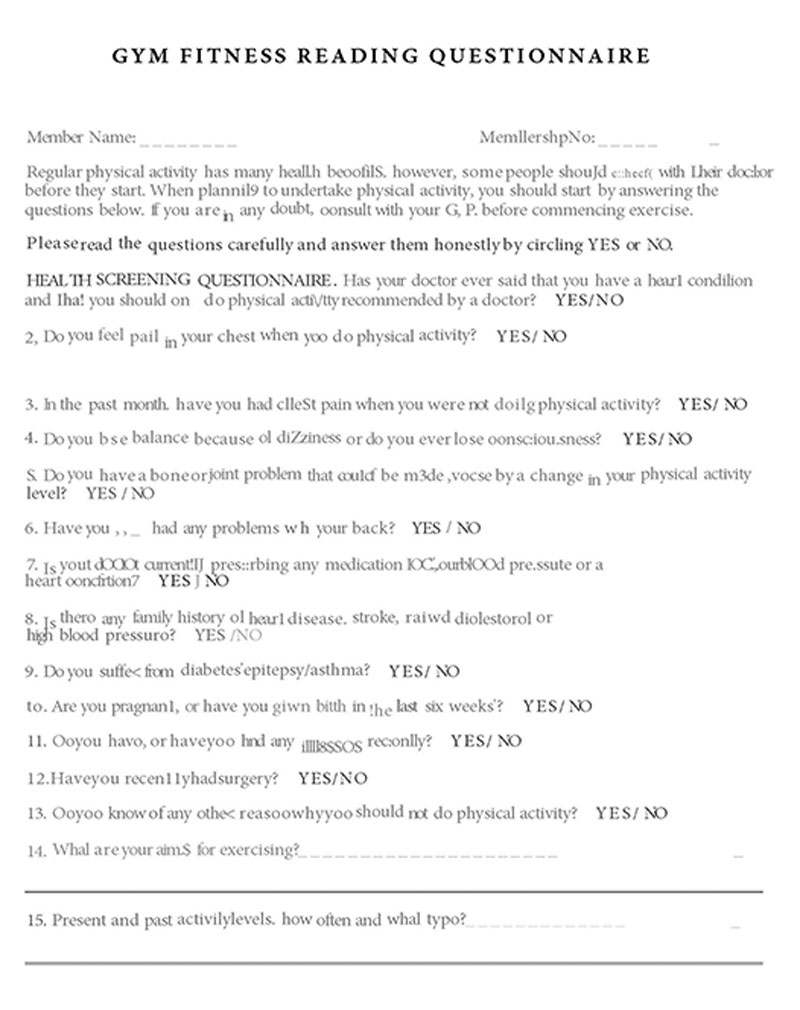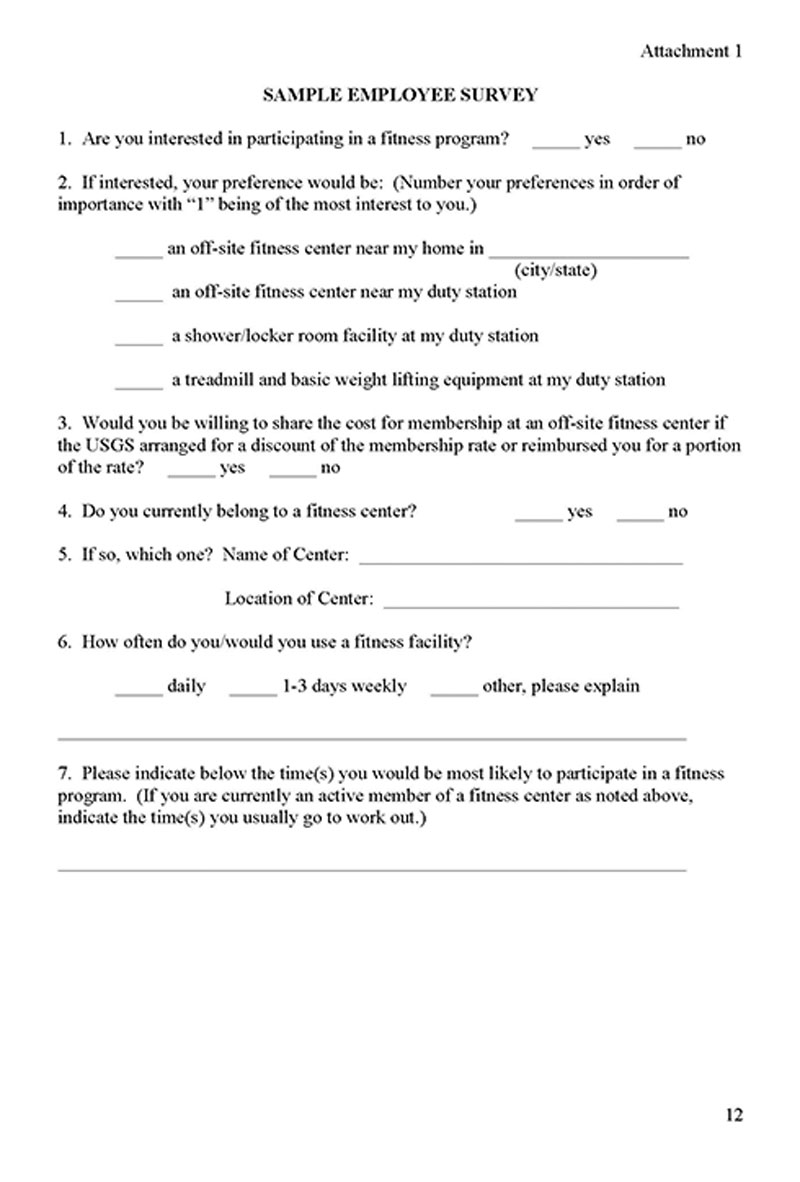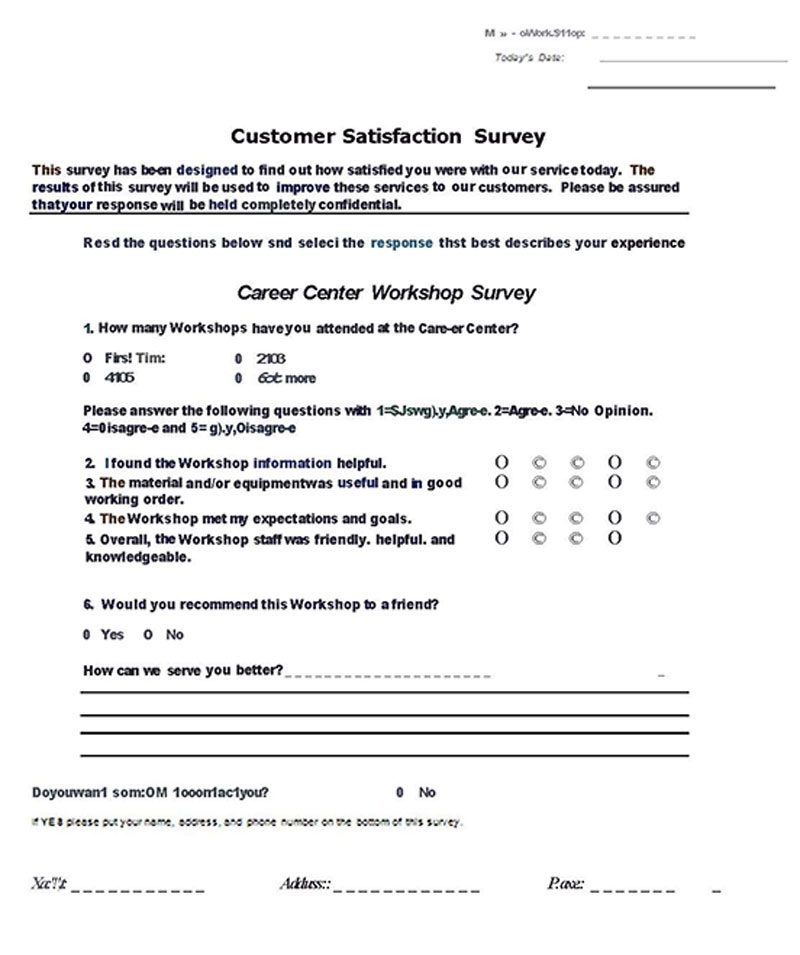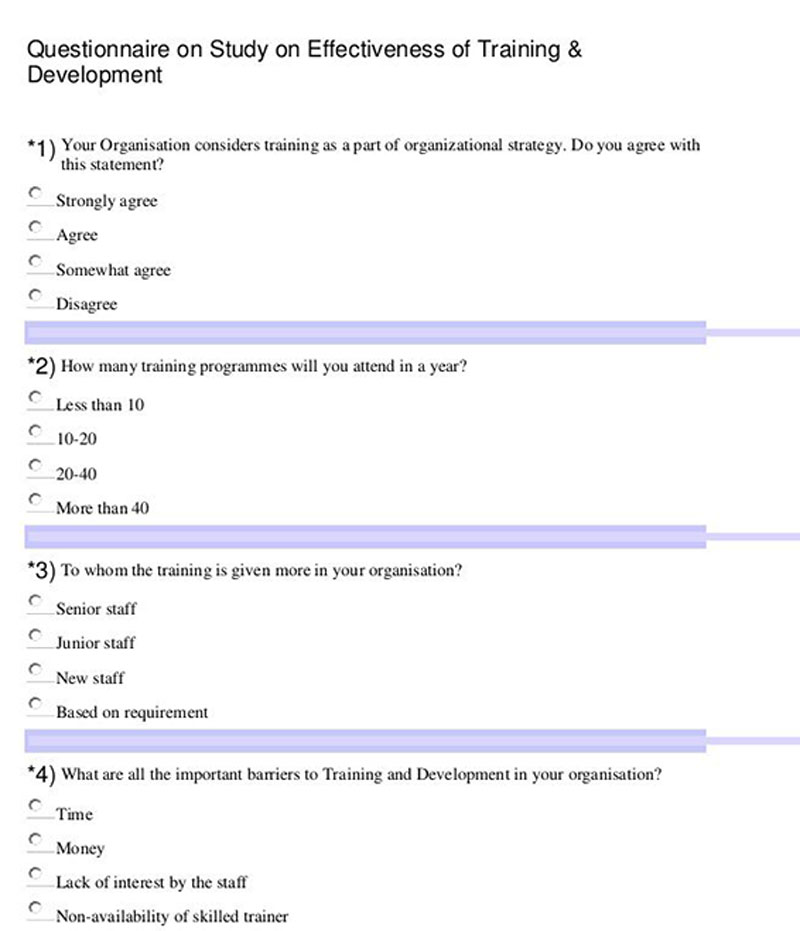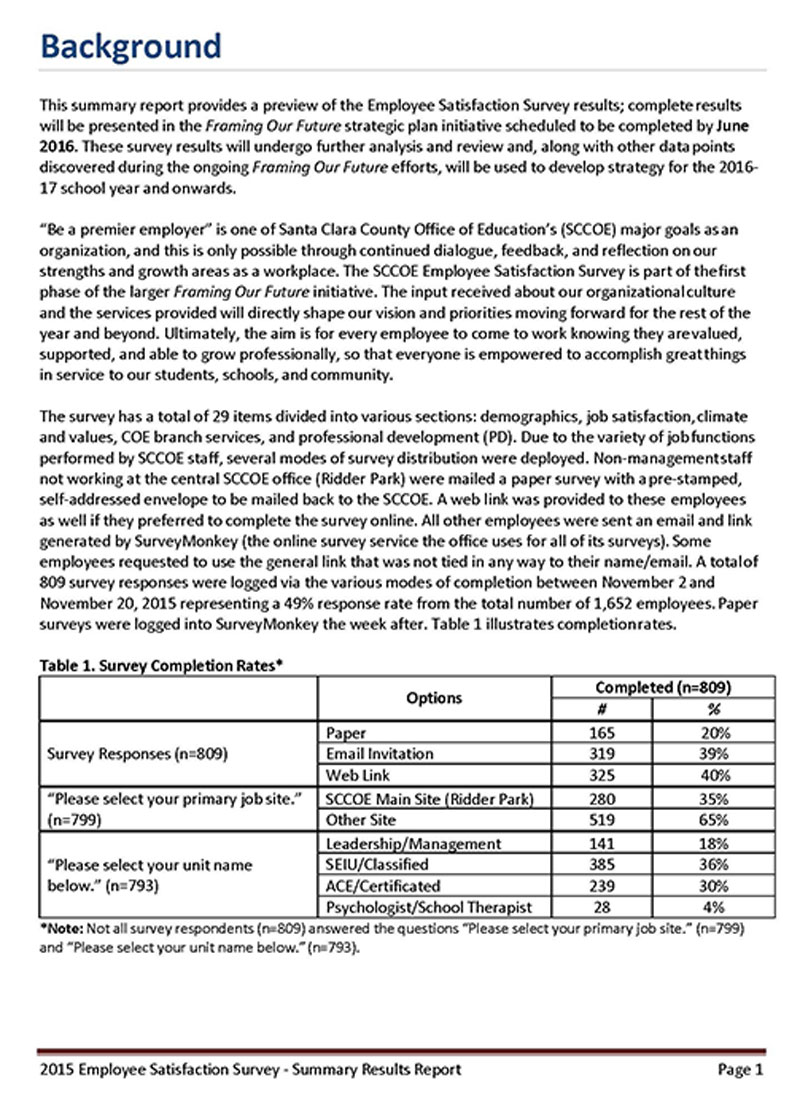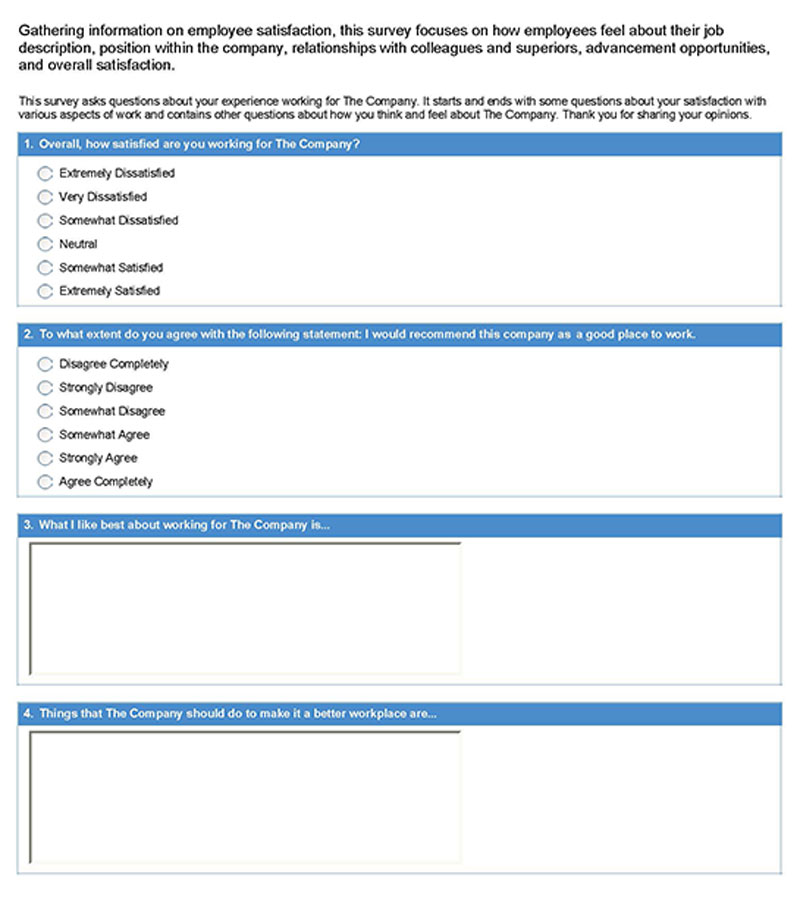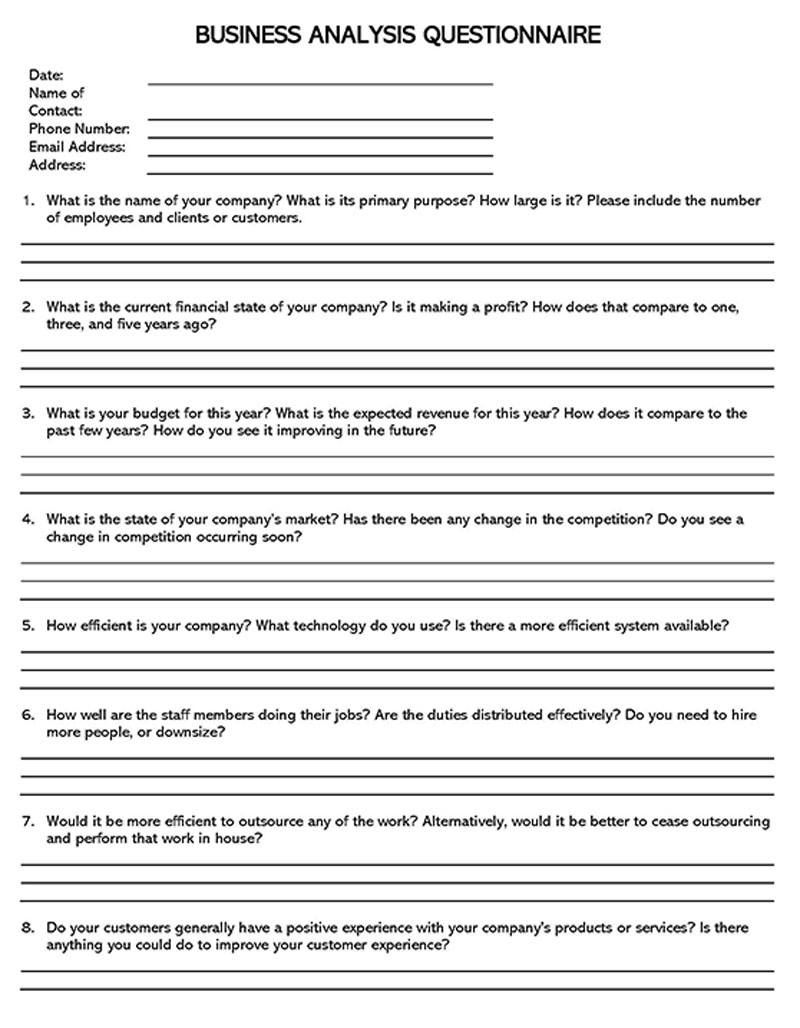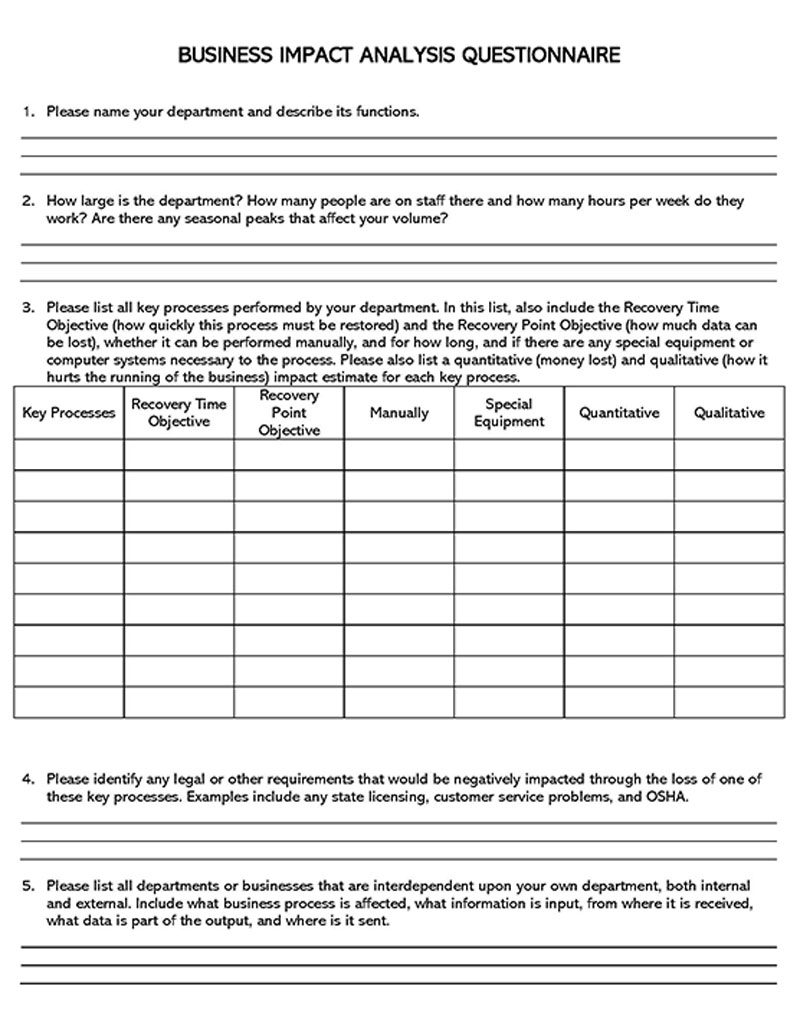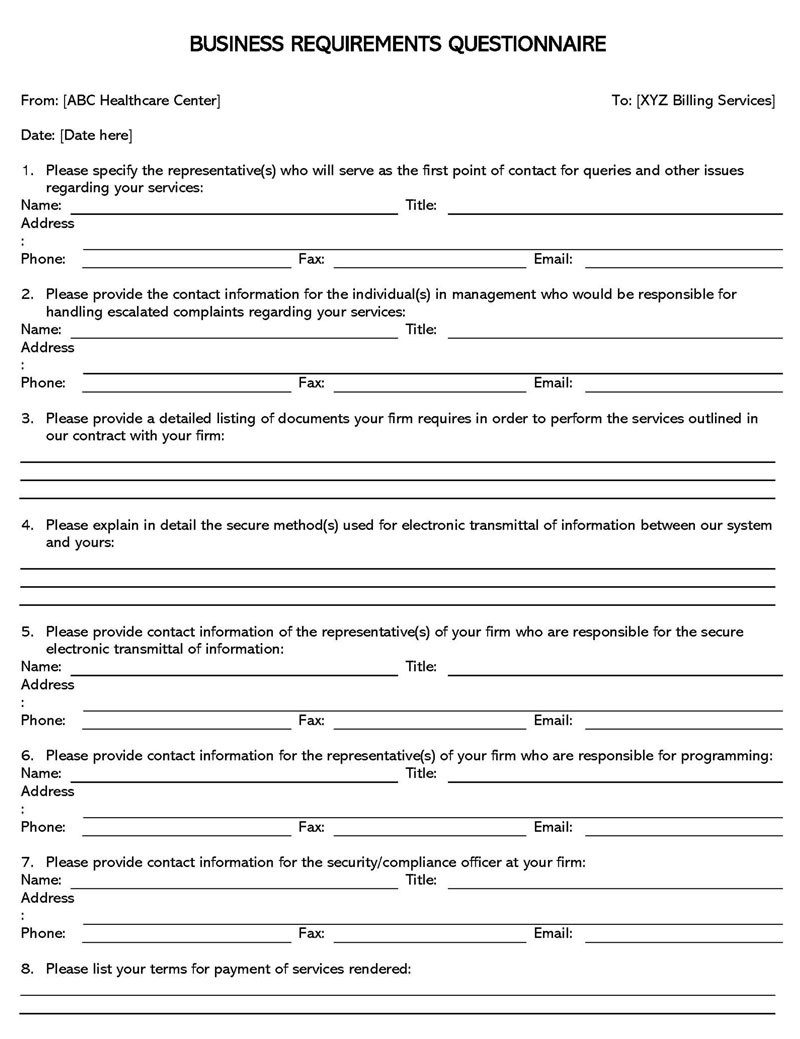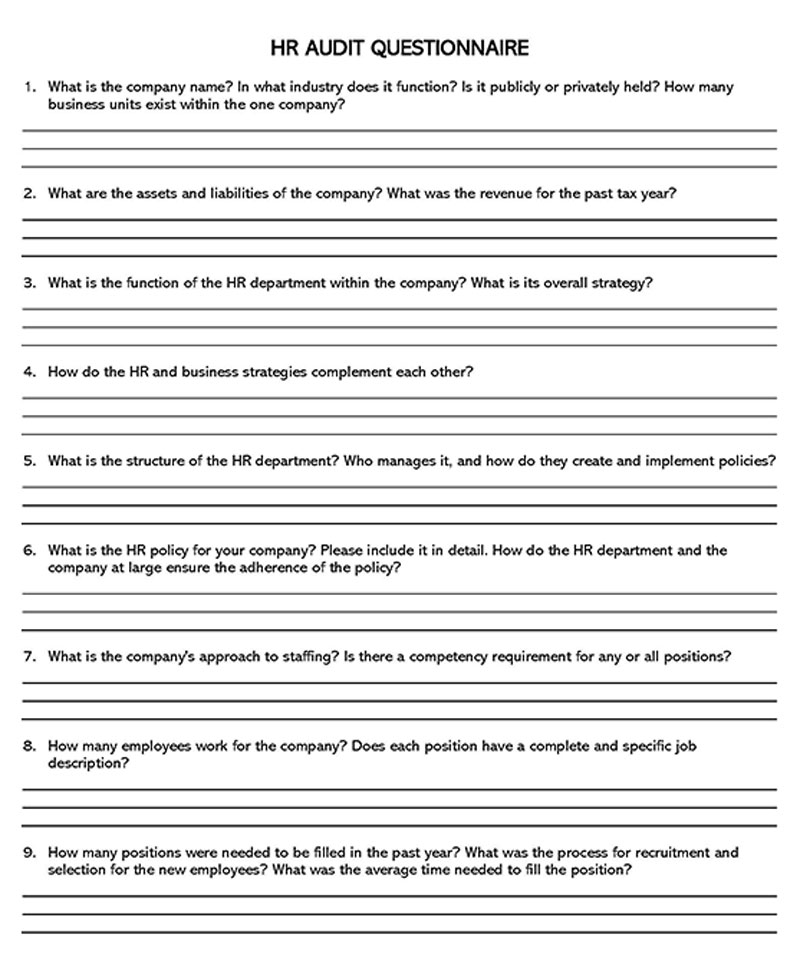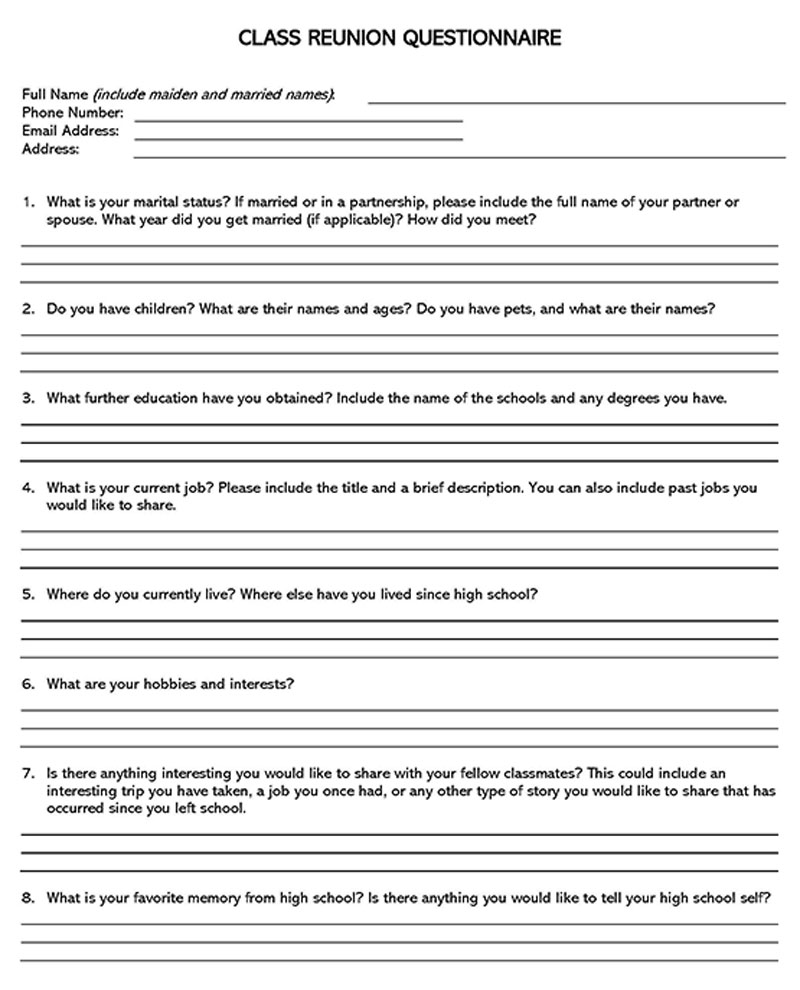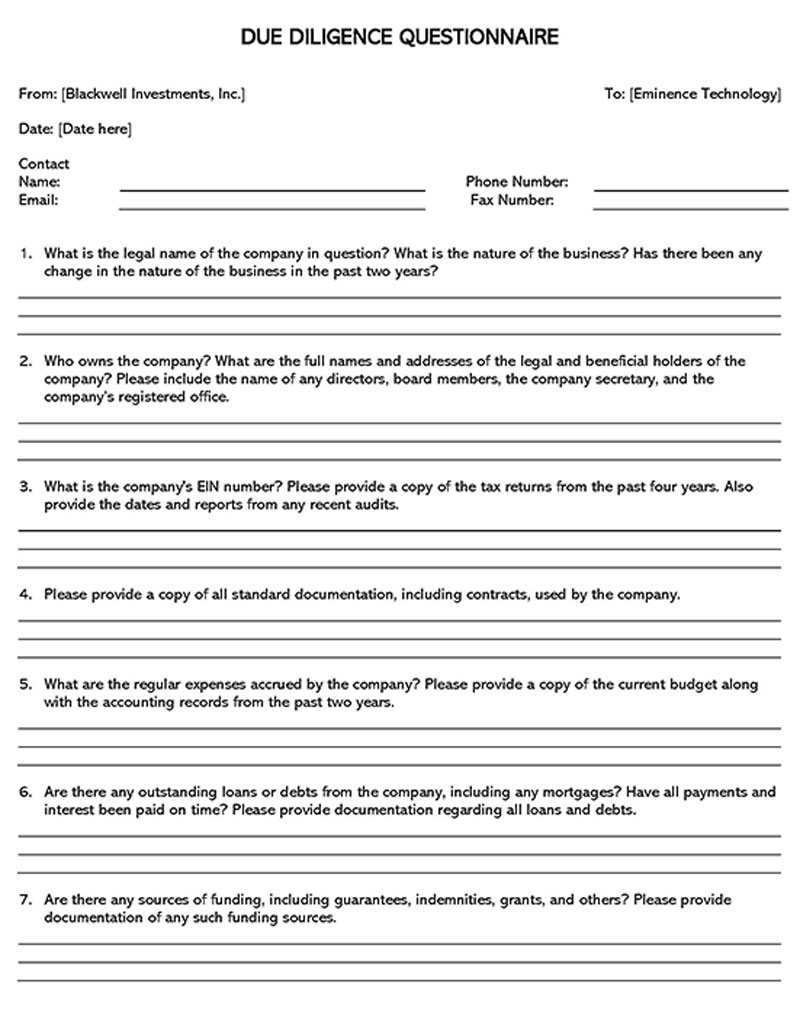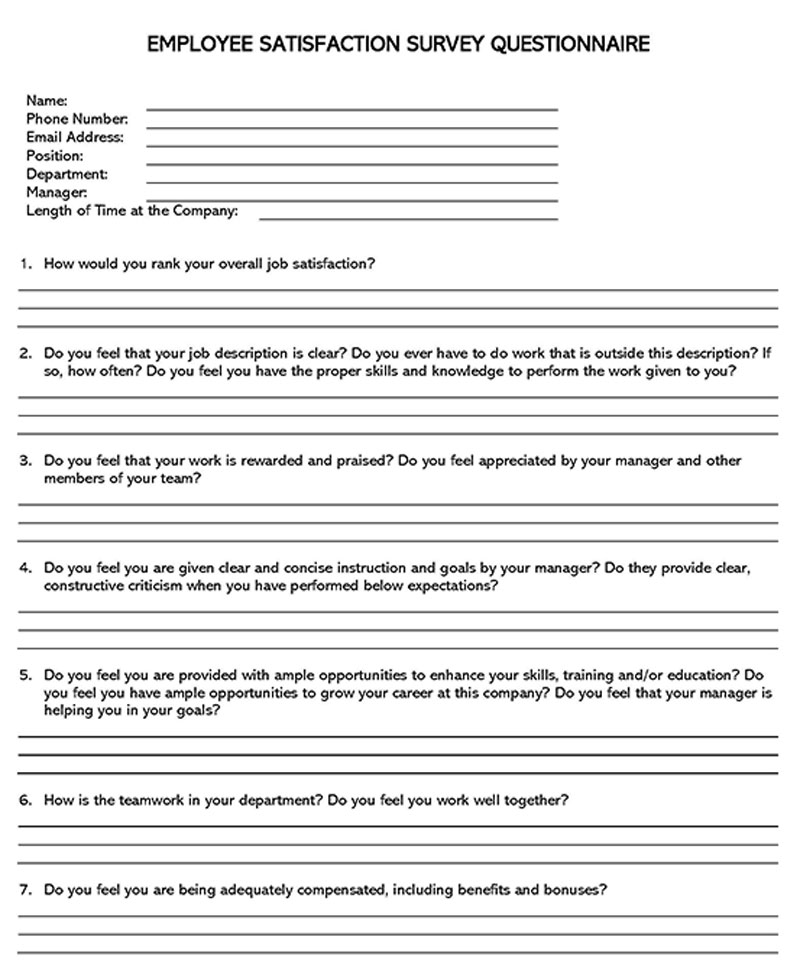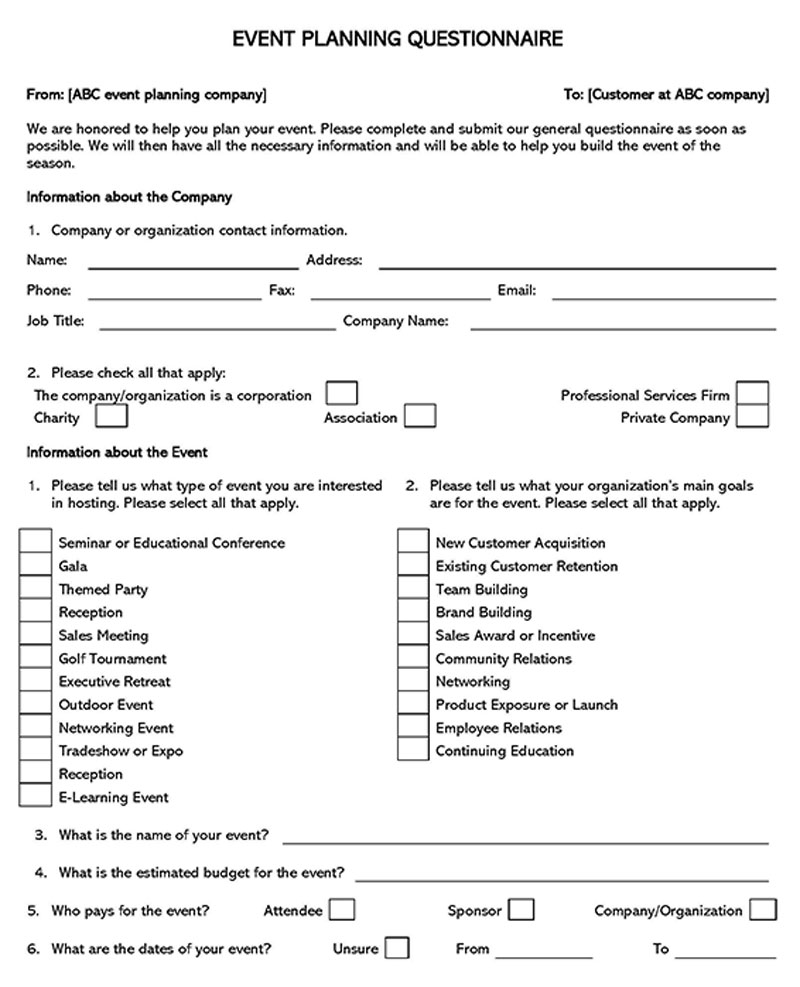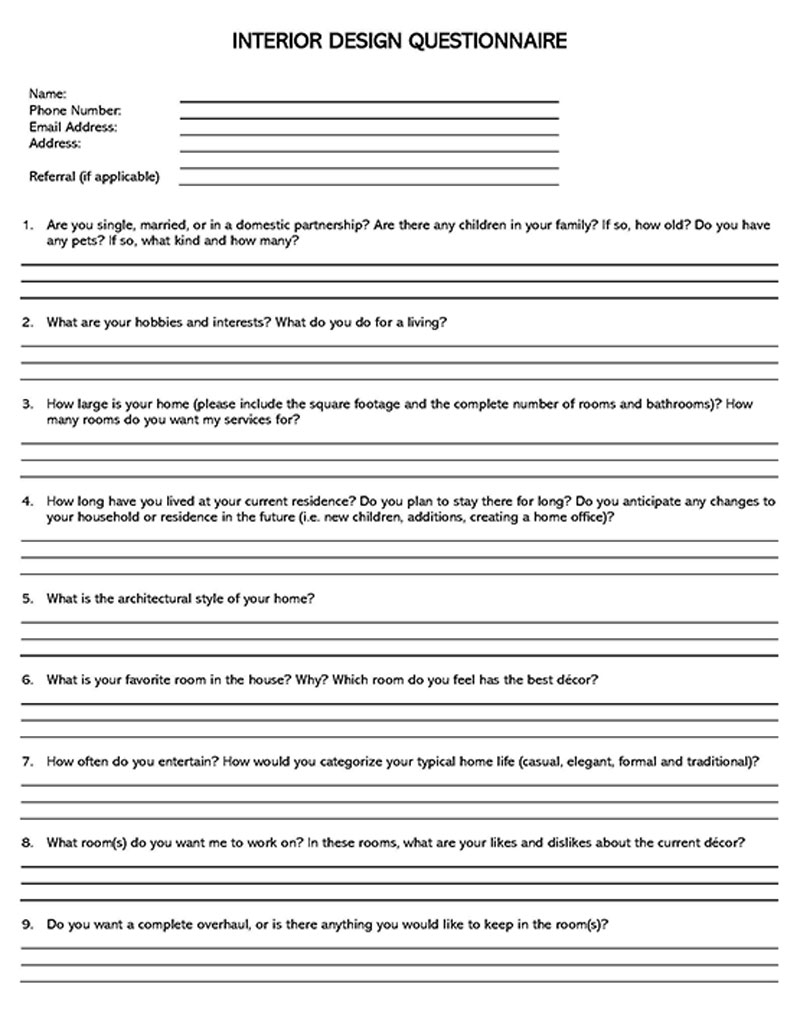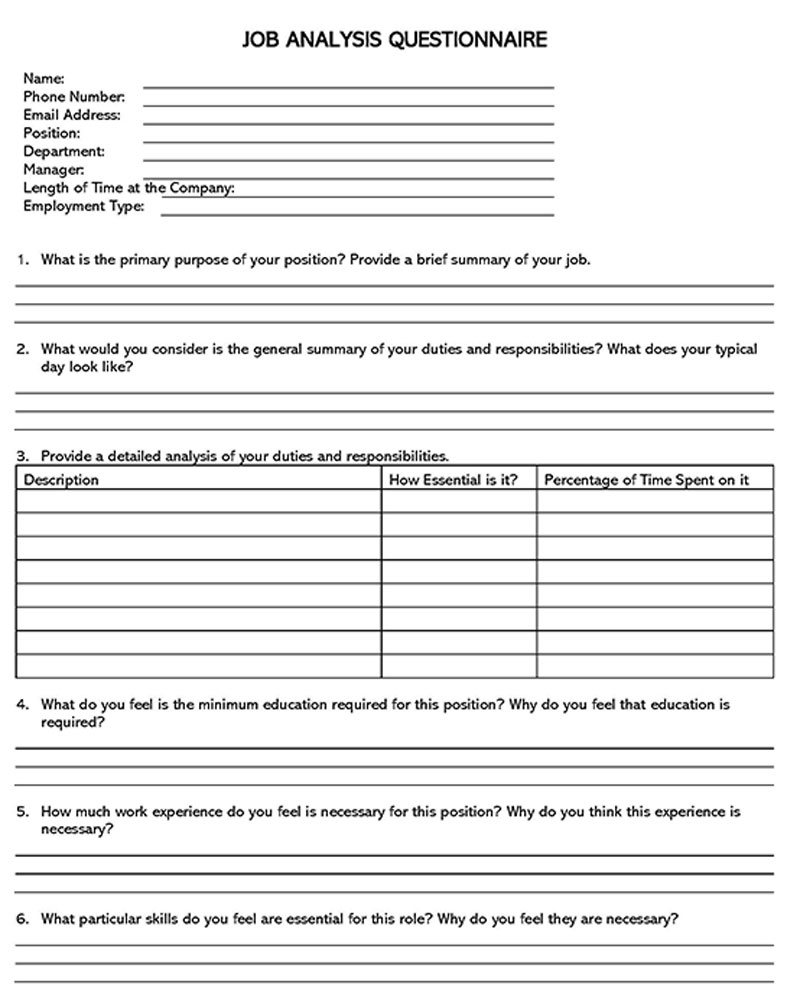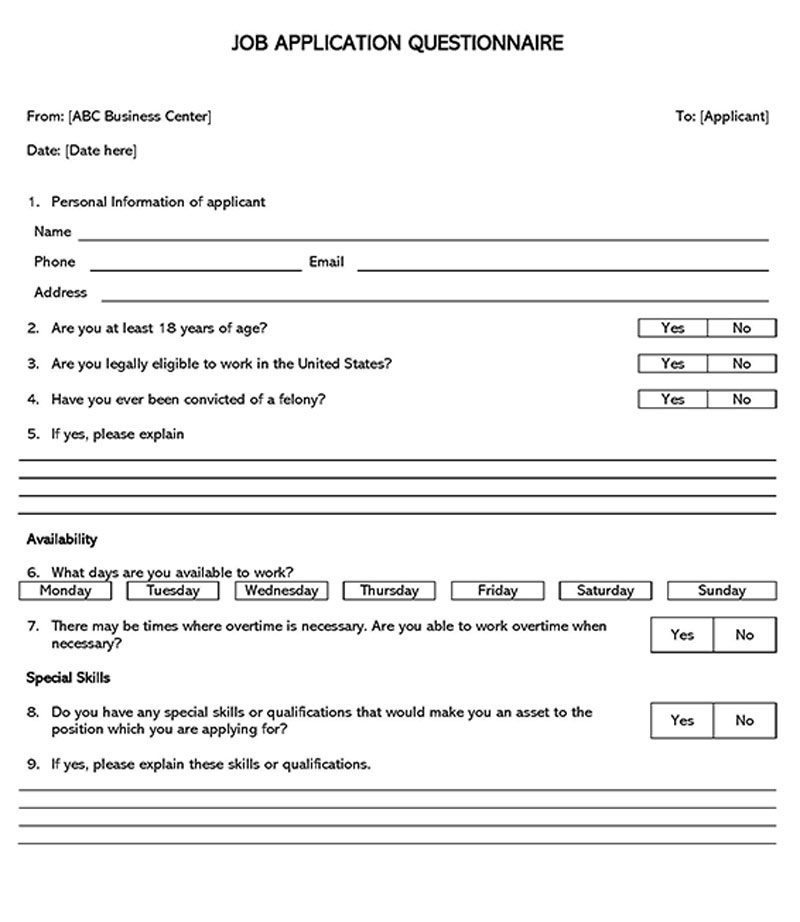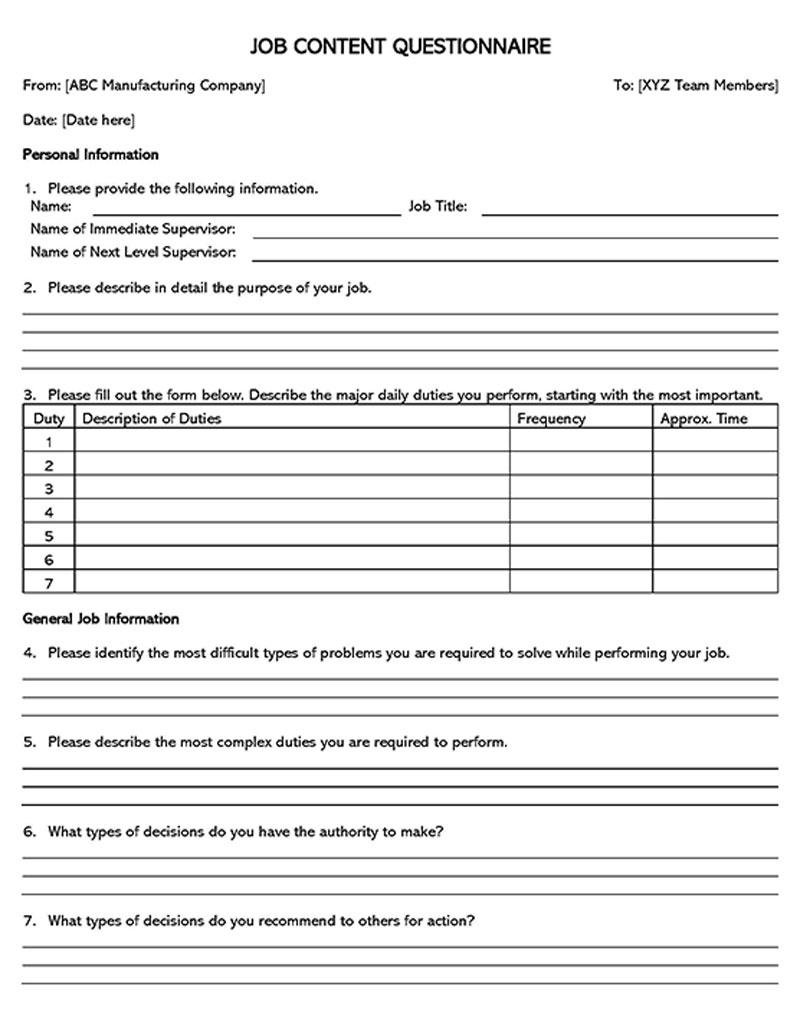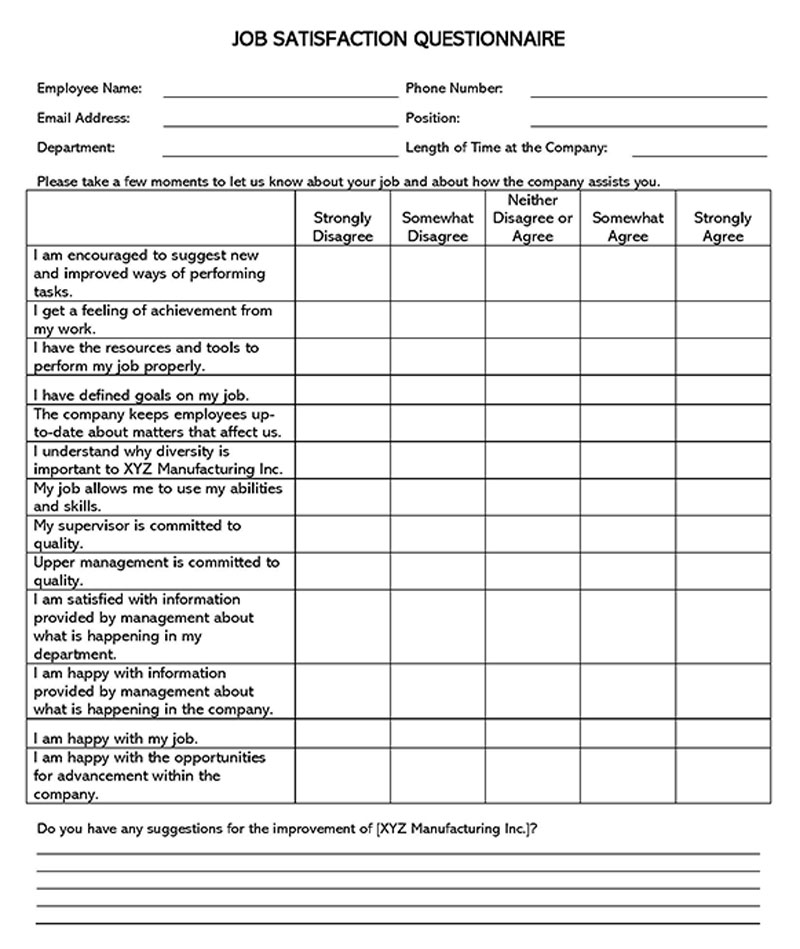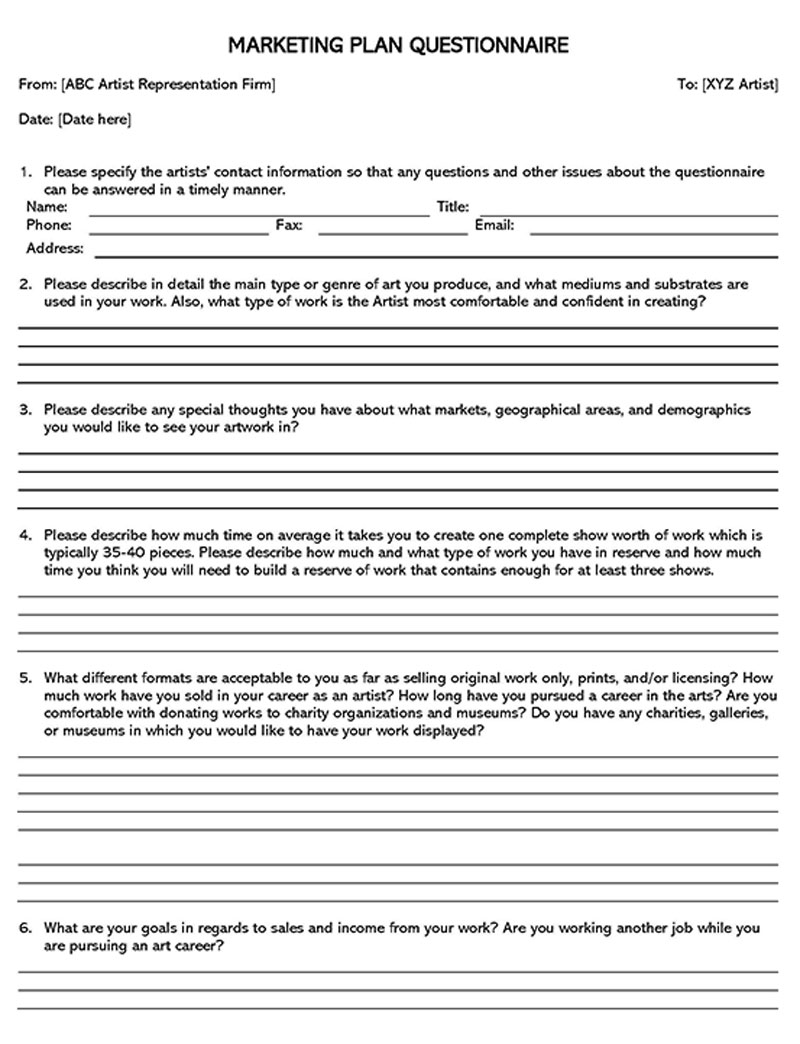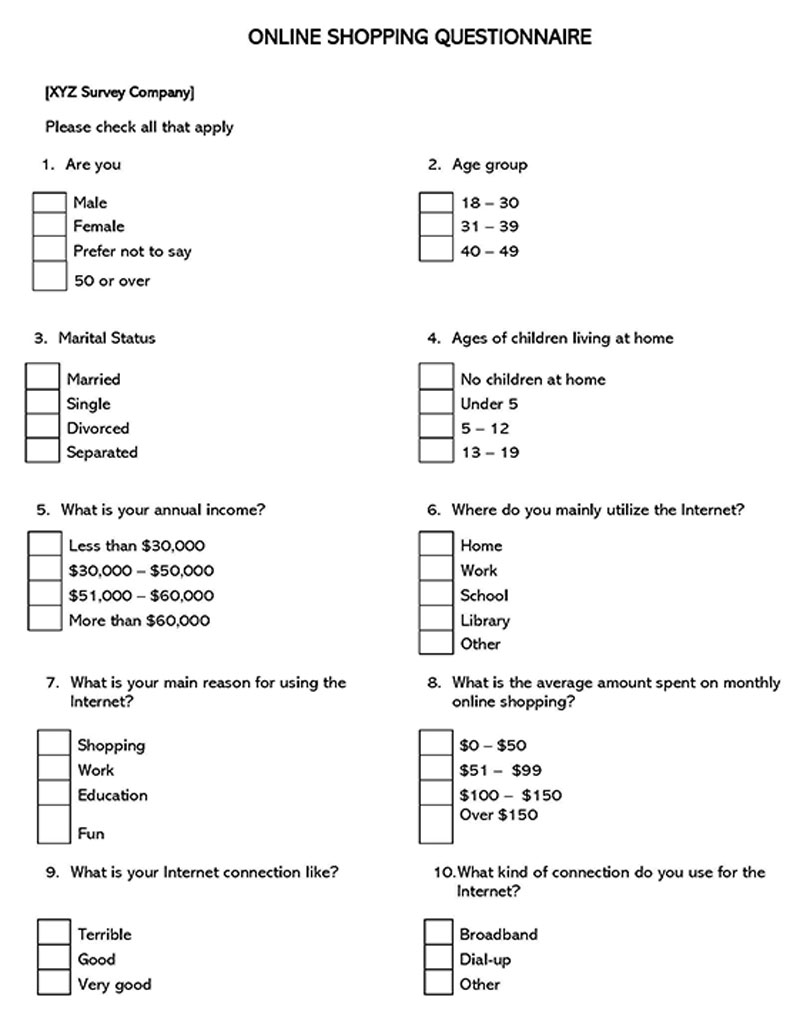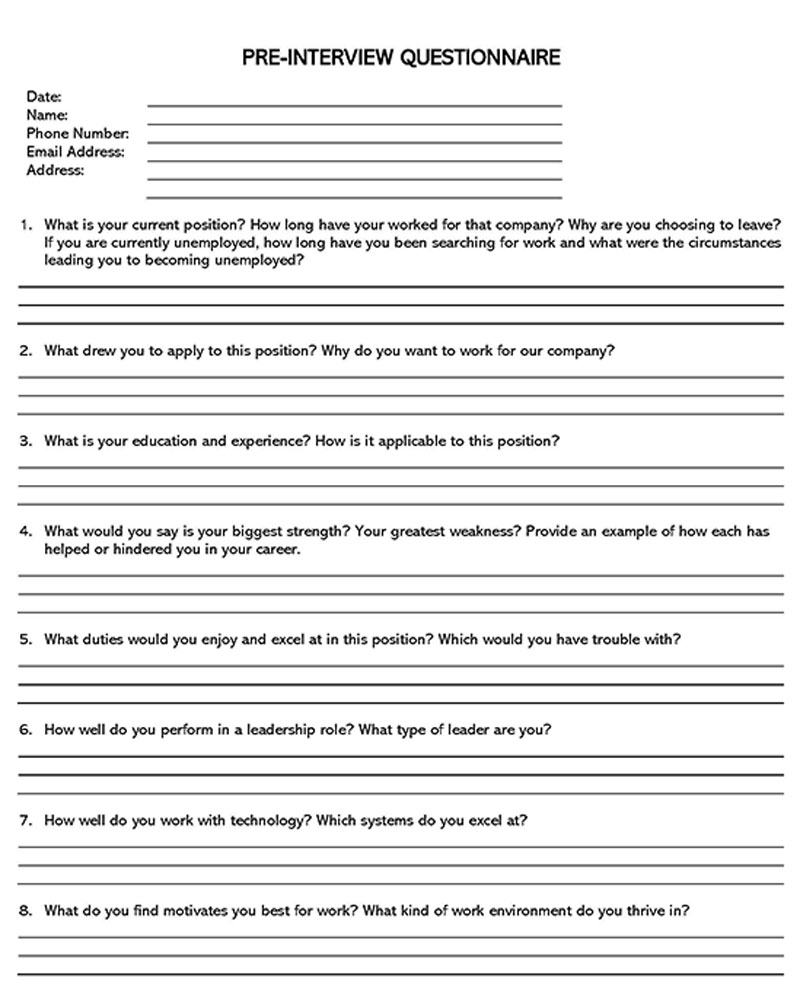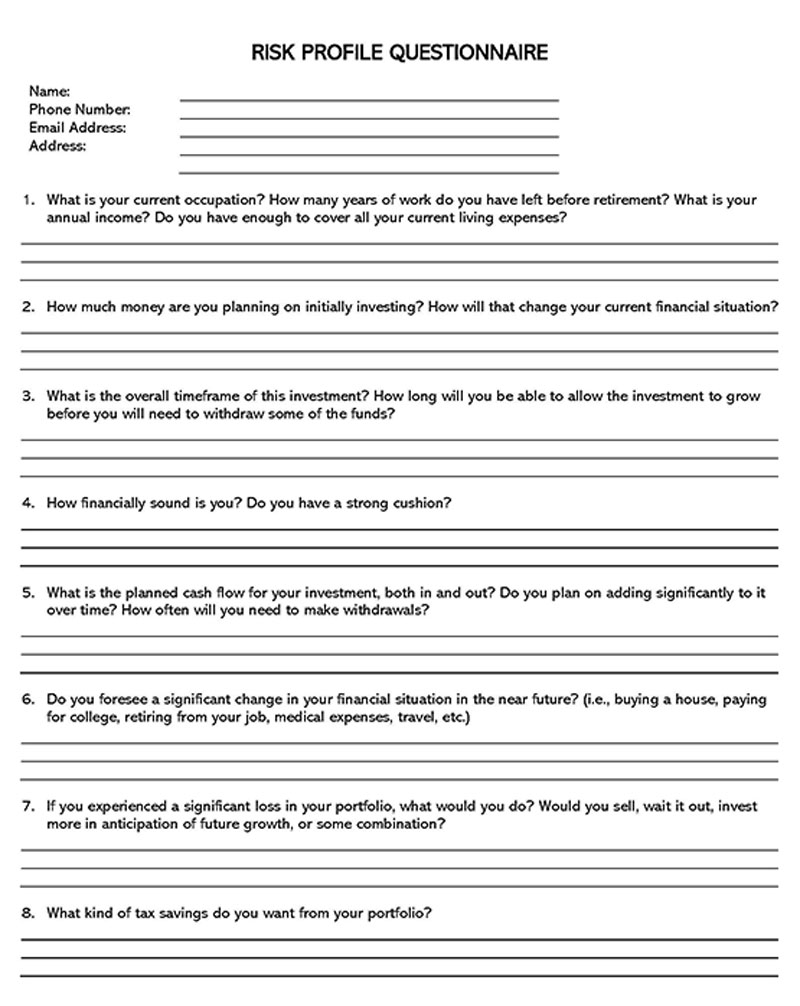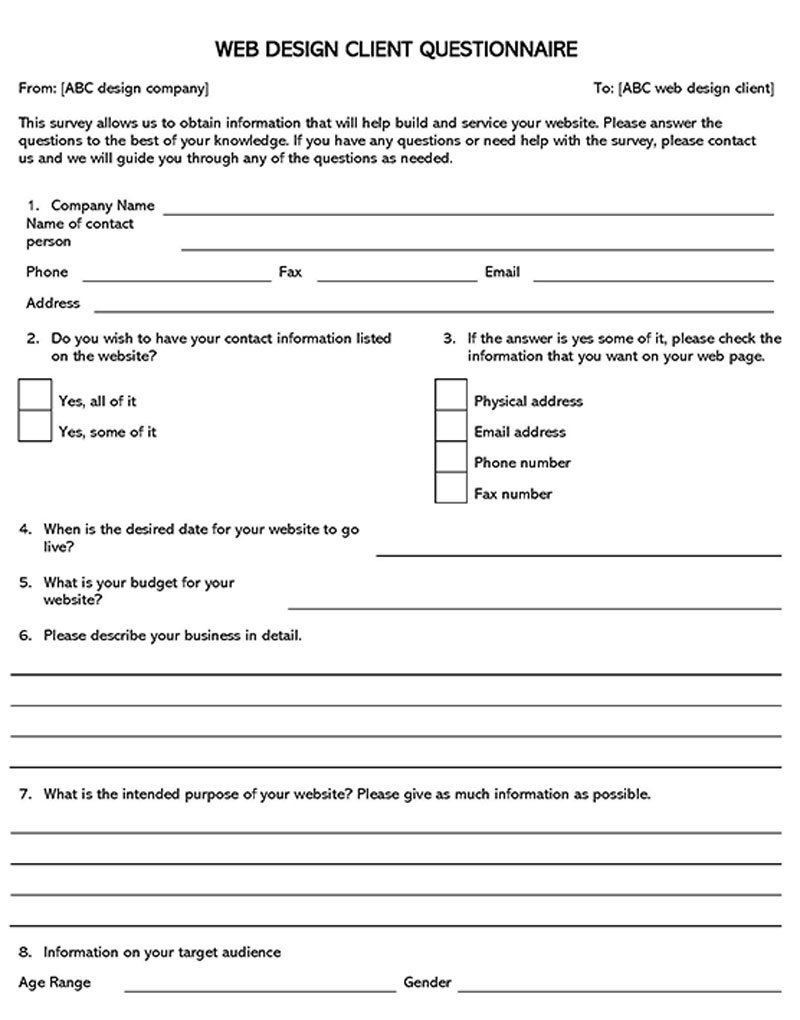As a researcher, gathering crucial information from a large population can be cumbersome and frustrating if you do not employ the right research tool. If you are conducting business research to obtain clients’ feedback on specific products and services, the most efficient and cost-saving research tool to use is a questionnaire.
In general, it is administered in a homogenous layout to ensure every respondent answers identical questions, making the research findings accurate and reliable for decision-making. This article will help you understand a questionnaire, and its various types, provide examples and templates and explain the strengths and limitations of each type of questionnaire.
Questionnaire Templates
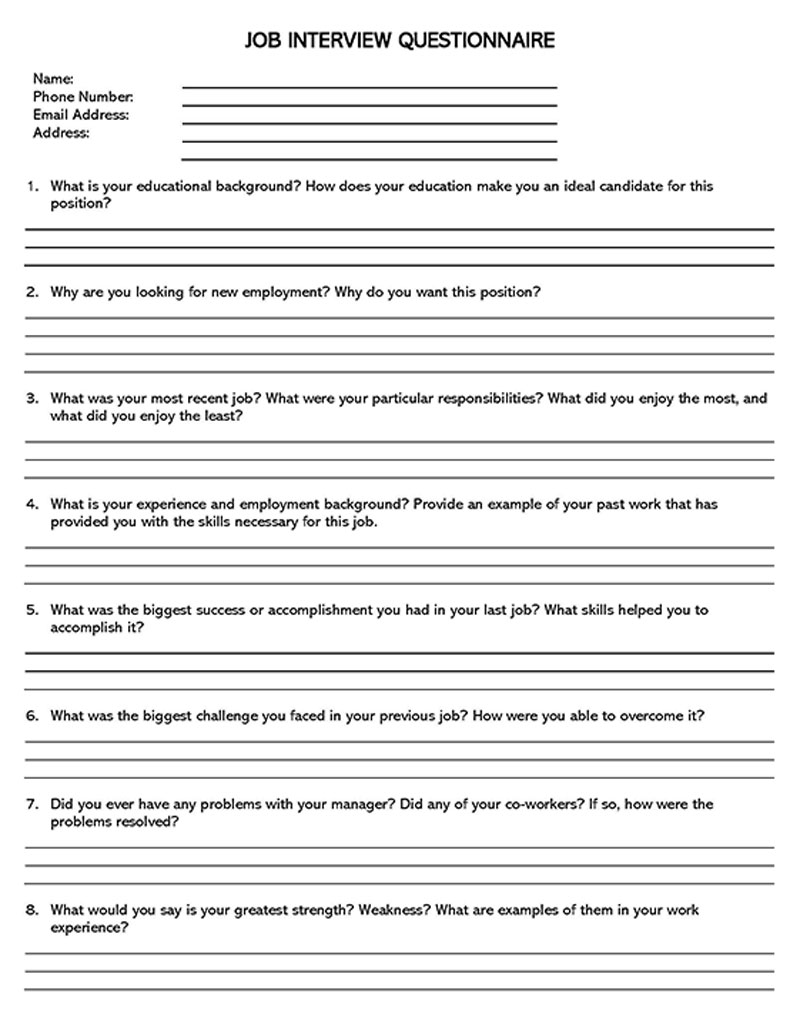
What is a Questionnaire?
It is a research tool that contains numerous sets of questions that help researchers gather crucial information from specific respondents.
It is the principal research tool used to collect data when conducting survey research. The data collected from it can be grouped as either qualitative or quantitative. When formulating it, the researcher must ensure that the questions are realistic, objective, and within the scope of the research goal.
Importance
It is the quickest, most effective, and relatively cheaper research method when you want to collect information from a large sample size. Furthermore, the researcher does not have to be physically present when the respondents fill in the questionnaires. Thus, it is an excellent alternative to interviews, especially when dealing with a large target population. In addition, researchers them to quickly gauge the respondents’ behavior, preferences, attitudes, and opinions on specific topics.
Survey Vs. Questionnaire
The term “questionnaire” refers to a research tool comprising questions used to gather data from targeted respondents. On the other hand, a survey collects data from targeted respondents using this to analyze that data. It is part of a survey, while a survey includes more than a questionnaire and is the complete process of data collection, aggregation, and analysis.
It is less expensive and takes less time to collect the necessary data, considering both cost and time. On the other hand, a “survey” will take a longer time, and the cost of administering a survey is much higher. It often uses closed-ended questions, while a survey incorporates both closed and open-ended questions. The survey is both a series of questions and the process of collecting, aggregating, and evaluating the replies.
Types of Questionnaires
Researchers use different types of questionnaires to meet different survey objectives. They can be summarized as follows:
Structured questionnaires (closed questions)
These provide respondents with a list of possible answers to each question. They are the best option when researchers are conducting quantitative research.
They can be grouped as follows:
- Dichotomous questions: They are closed-end questions formulated with only two possible answers. The most common examples of dichotomous questions in the questionnaires include Yes or No, Fair or Unfair, Agree or Disagree, and True or False.
- Scaling questions: Scaling questions gauge respondents’ response levels on a measurement scale. The measurement scales can be ordinal, interval, nominal, or ratio scales. For instance, rating responses in numbers or words can be included in such examples.
- Multiple-choice questions: These are objective assessment questions where respondents are requested to pick the correct answer from a list of choices. They usually include a variety of options rather than correct or incorrect answers.
- Likert scale questions: These are questions that contain a five-point or sometimes seven-point choice scale. It is also known as the satisfaction scale, and in most cases, the choices range from one extreme to the other. For instance, “I strongly agree to disagree strongly” is one of the Likert scale question examples.
- Pictorial questions: These questions use pictures as alternative answers to words in a visual format for logical reasoning. The respondents answer the questions by choosing the appropriate image from the list provided.
Strengths and limitations of structured questionnaires
They are efficient and cost-saving, as researchers can conveniently collect a massive amount of data at a relatively low cost. Furthermore, since all the questions are the same, they can be replicated to assess the reliability and consistency of the data collected. They provide quantitative data, which makes statistical analysis easier.
However, one of the main limitations of structured questionnaires is that they confine respondents’ feedback to a few choices, not allowing for alternative, better responses.
Unstructured questionnaires (Open questions)
Unstructured questions are qualitative and do not need pre-defined categories. Respondents are given the freedom to express their views openly. They provide rich insights and alternative views on the research topics. Unstructured questions give the respondents an excellent opportunity to express their opinions in the best way possible. When there are no answering limitations, respondents feel comfortable sharing finer details that researchers would not have known about if they used only restrictive pre-set answers.
Unstructured questions are suitable for multifaceted questions that require profound descriptions. However, researchers should limit the number of open-ended questions in their questionnaires to get a higher response rate because they require high intellectual reasoning and not all respondents will be able to answer such questions satisfactorily.
Strengths and limitations of unstructured questionnaires
They allow respondents to express their opinions on the subject matter without restrictions. They are ideal for obtaining qualitative data, though collecting such data can be time-consuming. They are only ideal for educated respondents, as they require high intellectual ability.
Another disadvantage of unstructured data is that researchers have a difficult time analyzing it since different respondents are likely to give different answers to similar questions, thus making the data analysis process difficult.
Methods for Distributing Questionnaires
There are several methods that researchers use to distribute questionnaires. They include the following:
Telephone questionnaire
For this one, the researcher will have the contact details of the respondents, and they will ask the questions over the phone.
In-house questionnaire
Just as the name suggests, an in-house questionnaire is one where the researcher visits respondents’ residences or workplaces and asks them questions directly.
Online questionnaire
They are in electronic form and must be completed online. The researcher will send them via email or any other online medium. The respondents will review them and provide the most accurate feedback through the same online medium.
Postal questionnaire
For this type, the researcher sends the respondent hard copies of the questions via mail. The respondents complete the questionnaires and send them back to the researcher at the same address.
Characteristics of a Good Questionnaire
Depending on the type of research being conducted and the type of respondents being targeted, researchers employ various formats. Nevertheless, every questionnaire must adhere to a set of fundamental requirements, regardless of its format.
They include:
Uniformity
All the questionnaires must be uniform, and all respondents must be asked the same questions. When all the questions are the same and presented in the same way, the responses will be the same, and the researcher can get uniform feedback, which will help in data gathering and analysis. This helps with more accurate data analysis and decision-making.
Exploratory
When collecting qualitative data, they must allow the respondents to express their opinions for improved research outcomes. Unstructured questions do not limit responses as structured ones do since respondents have more freedom to express their views on the subject matter.
Questionnaire length
This is the amount of time a respondent takes to complete a questionnaire. It is a significant consideration as it directly impacts the response rate, feedback quality, and survey costs. The length of the questionnaire can range from one minute to more than an hour, depending on the nature and complexity of the study.
Presentation
Respondents always pay close attention to how it is formatted, the font size being used, the framing of the survey questions, and the overall layout design. It should be well-designed to make it easier for respondents to share their views freely and accurately.
Question progression
All the questions asked must follow a well-laid-out structure and a smooth flow to make it easier for the respondents to reply objectively. A good questionnaire, for example, should include screening questions, starter questions, transition questions, classification questions, and others in that order. Respondents will feel excited to respond to such questions, and your research will have a higher response rate.
Guidelines to Design Questionnaire Effectively
When designing a questionnaire, it would be best to consider certain factors to make it distinct and give the respondents an opportunity to give honest feedback.
When designing it, keep the following tips in mind:
Consider your target audience
The first factor to consider before starting your intended research process should be your target population. Spend time understanding their culture, language, education levels, age, and gender. Try to create the questionnaire in the local language or the participants’ native language to ensure that you are designing them in a language that your target audience can understand.
Use templates
If you are new to research or you do not have a lot of time to allocate to preparing them by yourself, start by using free downloadable templates. Research professionals write them, and you can easily customize them to fit your target niche.
Pilot study
A ” pilot study” refers to conducting a small-scale study before carrying out the entire research. It uses a small sample size to understand all the possible dynamics before conducting the entire research, thus saving time and money.
note
It should be noted that conducting a pilot study has several advantages. The researcher can know whether the terminologies used in the questionnaire are easy to understand or not. The researcher can also gauge whether they have set the proper length depending on the time respondents take to complete the questions thoroughly. In addition, the pilot study determines if any emotional questions might not resonate well with the respondent. It also helps eliminate leading questions, as they can lead to prejudice.
Keep it brief and simple
Do not use complex terminologies in it, as they can easily confuse the respondents. Instead, use the most straightforward words and phrases that the respondents can easily understand to give accurate answers.
Be flexible with your options
When designing a survey, it is essential to be flexible in some areas. For example, instead of offering limited choices, you can consider giving respondents other, unspecified options so that they can offer their own unique views or opinions that do not fit into the available options.
Ask one question at a time
Long sentence structures and combining two questions into one can be confusing, and respondents may struggle to provide the correct answer. For better accuracy of results, you should avoid asking questions that include “and,” as they become two questions in one.
Make it straightforward, unbiased, and understandable
Ask questions in a precise and direct manner. The language should be simple to understand and unbiased. Questionnaires with unclear words and vague statements do not motivate respondents to give honest feedback.
Choose a simple visual design
You should never complicate the visual design of it. Remember that the main aim of a questionnaire is to gather information from the respondents, and the layout and design should not distract them. If you complicate the visual design, you will confuse the respondents and might not get accurate answers.
Order of the questions must be logical
The questions asked should have a clear flow to engage the respondent. Ideally, introductory questions should be at the start of the questionnaire, followed by more multifaceted ones. Ask only important questions
Only ask relevant questions related to the topic. If a question is not related to the research objectives, you should not ask it. Questions in survey research should be restricted to a specific topic only, and the kinds of questions asked should be the ones that add value to the research findings.
NOTE
It is the researcher’s responsibility to ensure all the information provided by the respondents is accorded the utmost confidentiality. When respondents are assured that their identity will be concealed, they will be more relaxed and ready to participate even in the most sensitive topics. Therefore, every respondent must consent to participate in the research before completing the questionnaire. Equally, they should have the option to withdraw from the survey if they deem it necessary.
Strengths and Weaknesses
It is one of the most effective research tools for collecting data from a large population. However, although it offers many advantages, it also comes with several limitations. The following are some of the strengths and weaknesses of a questionnaire that every researcher should know about:
Strengths
There are several advantages that they offer researchers compared to other research tools. They include the following:
- Practicality: They help researchers gather data much faster when focusing on a significant population, making them the most convenient research tool in such situations.
- Cost efficiency: There are many methods that researchers can use to send it to the targeted respondents. Digital means such as online website surveys and emailing simplify the distribution process since you do not have to meet every respondent to physically give them a questionnaire.
- Speed: It does not take a long time to get the research results, especially when it is administered through an online platform.
- Comparability: Suppose the survey is on the same topic and dynamics almost remain the same. In that case, researchers can repeat it every year for several periods and compare the pattern of research results to make an informed decision.
- Standardization: They facilitate research uniformity, where every respondent gets the same number and type of questions.
- Scalability: They have a high scalability rate and are efficiently distributed to targeted respondents in different regions.
- Easy to fill by the respondents: Respondents can fill out questionnaires in the comfort of their homes or offices. When somebody does not supervise them, respondents can give honest and more in-depth feedback, which adds to the quality of the research study.
- Easy analysis: Online questionnaires have built-in data analytics tools that automate the process of data analysis. All collected data can be analyzed within a short period of time. Thus, it helps save the time and effort of the researcher.
Weaknesses
The following are some of the disadvantages of using a questionnaire as a research tool:
- Dishonesty: Not all the answers provided are necessarily accurate. For example, some respondents may conceal sensitive information or provide an answer that only aligns with popular opinion.
- Skipping questions: There are instances where respondents may choose not to answer some questions, which will lead to many missing values in data analysis and affect the quality of the research. To minimize this kind of risk, always ask the respondents to reply to all the questions asked.
- Interpretation difficulties: If it contains difficult words or vague statements, respondents can have difficulty interpreting the questions, and the researcher might get the wrong answers. That is why it is essential to ensure everything is written clearly and precisely.
- Unconscientious responses: Very long questions can make the respondents lose interest in answering the questions objectively. To avoid this risk, always keep your questions short, precise, and straight to the point.
- Survey fatigue: When you conduct many surveys or lengthy questionnaires to the respondents, many are likely to get tired, resulting in poor or low-quality feedback.
- Analysis challenge: Make sure you have a balanced ratio of closed-ended and open-ended questions in your survey to make data evaluation and analysis much more detailed.
Conclusion
A questionnaire is the right research tool to use when you want to conduct a research survey on a large population to get their feedback about specific products or services. It helps researchers collect a large amount of data in a short period of time and analyze it most cost-effectively. If you want to start a new research project on a specific subject, take advantage of the free downloadable templates and examples that have been provided in this guide to conduct successful survey research.
